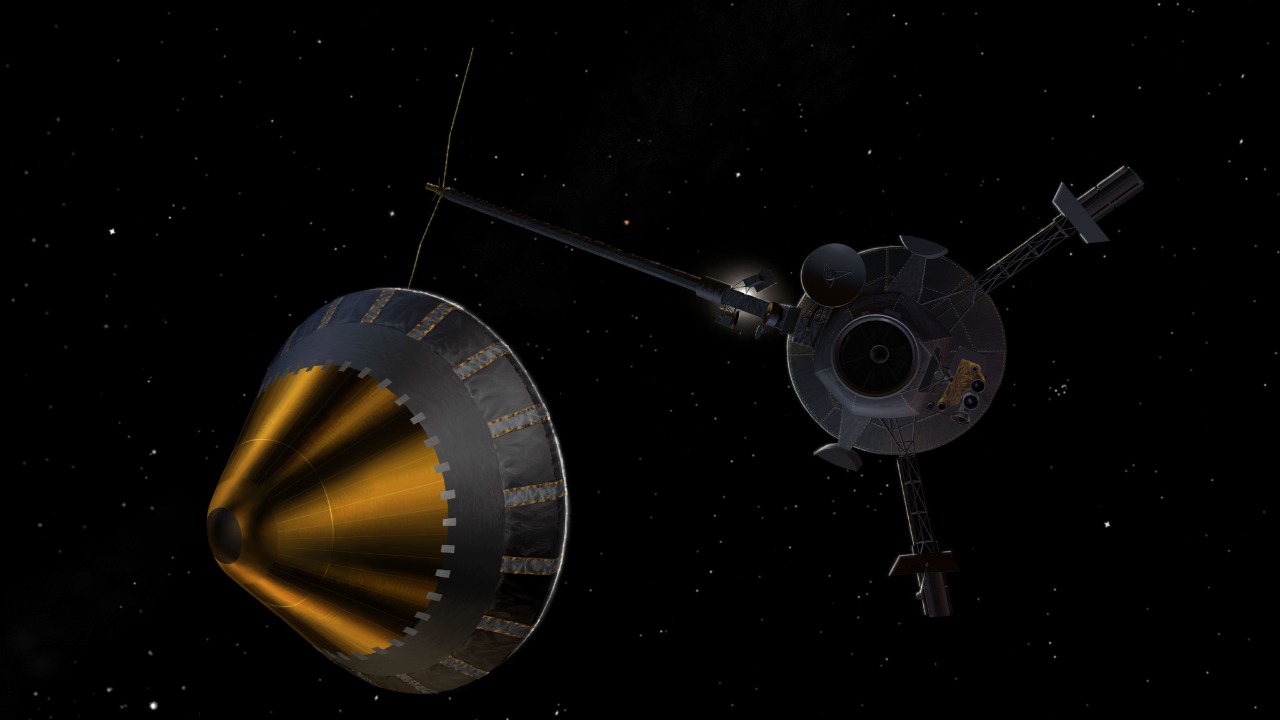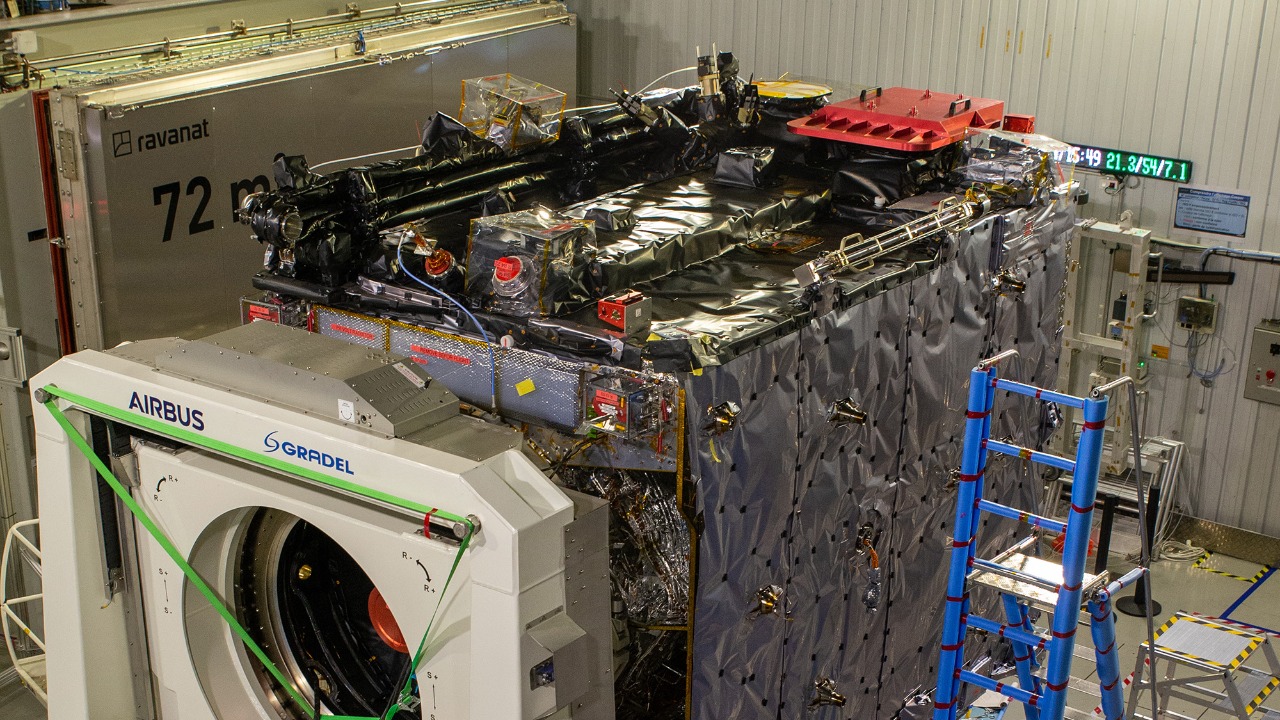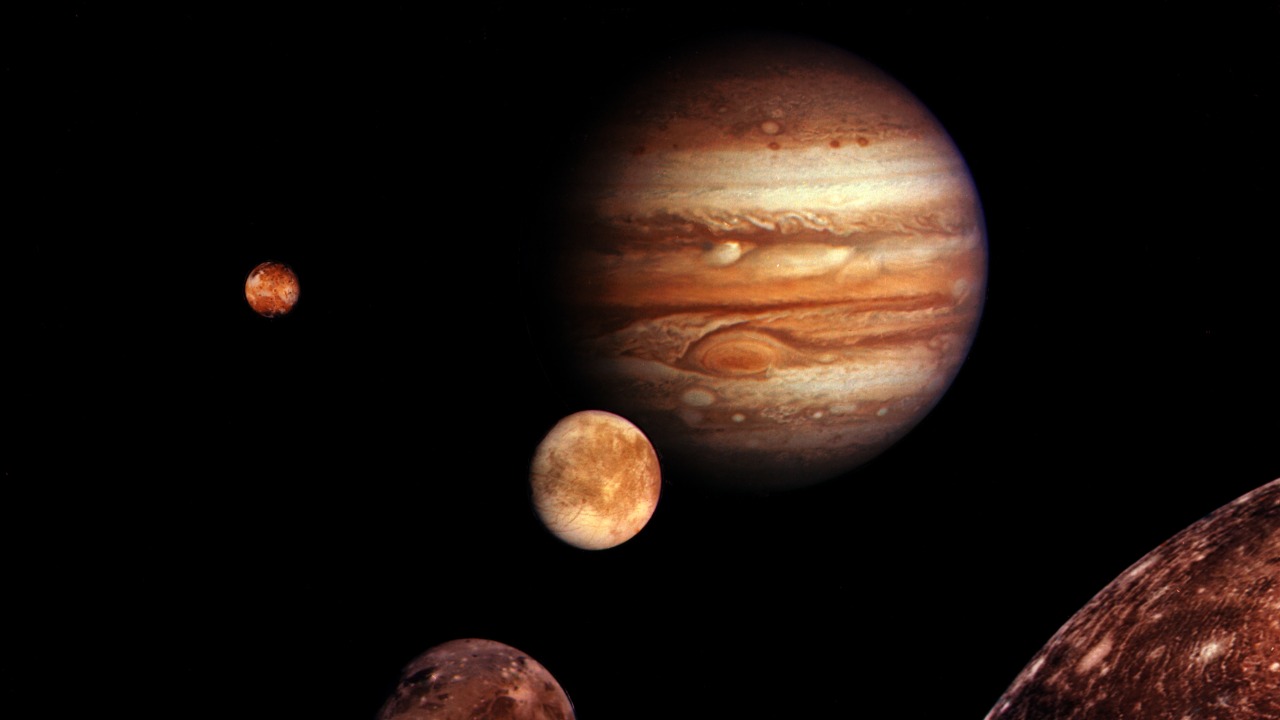
Jupiter’s moons have long fascinated scientists with their potential to harbor life, challenging our understanding of life-friendly environments. Recent missions and studies suggest that these icy worlds might provide the necessary conditions for life, making them prime targets for astrobiological research.
The Icy Surface and Subsurface Oceans

Jupiter’s moons, particularly Europa and Ganymede, have captivated the scientific community due to the evidence of vast subsurface oceans beneath their icy exteriors. For Europa, data collected by previous missions, including the Galileo spacecraft, suggest that beneath its icy crust lies an ocean potentially twice the volume of Earth’s oceans. The presence of these oceans is crucial, as water is a fundamental ingredient for life as we know it. The cracks and ridges on Europa’s surface, along with the chaotic terrain on Ganymede, further point to a dynamic subsurface oceanic environment.
Beyond just housing water, these subsurface oceans might also be sites of chemical reactions that provide energy. The interaction between water and the rocky seafloor could produce hydrogen and other chemical compounds, potentially serving as an energy source for life. This process, known as serpentinization, has been observed on Earth and is thought to be a key contributor to the energy that sustains life in oceanic hydrothermal vent communities. The possibility of such processes occurring beneath the icy crusts of these moons opens up exciting prospects for astrobiology.
Radiation and Geological Activity

Jupiter’s intense radiation presents both challenges and opportunities for life on its moons. On the surface, high levels of radiation could be detrimental to life, making it difficult for any organisms to survive. However, the thick icy shell of Europa provides some protection, potentially allowing life to exist in the subsurface oceans. Studies have shown that radiation can also play a role in creating valuable chemical compounds. For instance, radiolysis, the dissociation of molecules by radiation, might produce oxidants that could serve as an energy source for life.
The geological activity on these moons, driven by tidal heating, further enhances their potential habitability. Tidal forces exerted by Jupiter cause the interiors of its moons to heat up, leading to volcanic activity and the creation of hydrothermal vents on the ocean floor. These vents, similar to those on Earth, could offer environments where life thrives, protected from the harsh conditions above. The constant reshaping of the surface through geological processes also suggests that new nutrients could be cycled from the surface to the ocean below, supporting the idea of a potentially habitable environment.
Recent and Upcoming Missions

The European Space Agency’s JUICE (JUpiter ICy moons Explorer) mission is set to explore Ganymede, Callisto, and Europa, focusing on their potential for life. Scheduled for a 2030 arrival at Jupiter, JUICE will study the moons’ surfaces and subsurface environments, providing crucial data that could enhance our understanding of these icy worlds. These missions collectively represent a new era of exploration, offering the possibility of uncovering signs of life beyond Earth.
Astrobiological Potential

The possibility of microbial life existing in the subsurface oceans of Jupiter’s moons is a tantalizing prospect. Scientists hypothesize that, much like extremophiles on Earth, life on these moons could adapt to extreme conditions, using chemical energy sources instead of sunlight. Astrobiological research suggests that microbial life could thrive in the dark, high-pressure environments of these subsurface oceans, surviving off the chemicals produced through interactions between water and rock.
Drawing parallels with Earth, we find that extremophiles in hydrothermal vent ecosystems, such as those on the ocean floor, provide a potential model for what life on Europa or Ganymede might resemble. These organisms rely on chemosynthesis rather than photosynthesis, utilizing chemical reactions to obtain energy. Such insights from Earth’s extremophiles offer valuable clues for scientists searching for life in similar extraterrestrial environments.
Challenges and Future Prospects

Exploring Jupiter’s moons presents significant technological and scientific challenges. The vast distance from Earth requires advanced propulsion systems and communication technologies to ensure successful missions. Moreover, the harsh conditions, including intense radiation and extreme cold, necessitate the development of specialized instruments capable of operating in such environments. Overcoming these hurdles is crucial for future explorations and the potential discovery of life.
Looking ahead, advancements in space exploration technology will be vital in continuing the search for life on Jupiter’s moons. Future missions could involve landers or even submersibles designed to penetrate the ice and explore the oceans beneath. As we push the boundaries of what is possible, the prospect of discovering life beyond Earth becomes increasingly plausible. The icy moons of Jupiter remain one of the most promising locations in our solar system to find evidence of life, representing a bold new frontier in our quest to understand the universe.